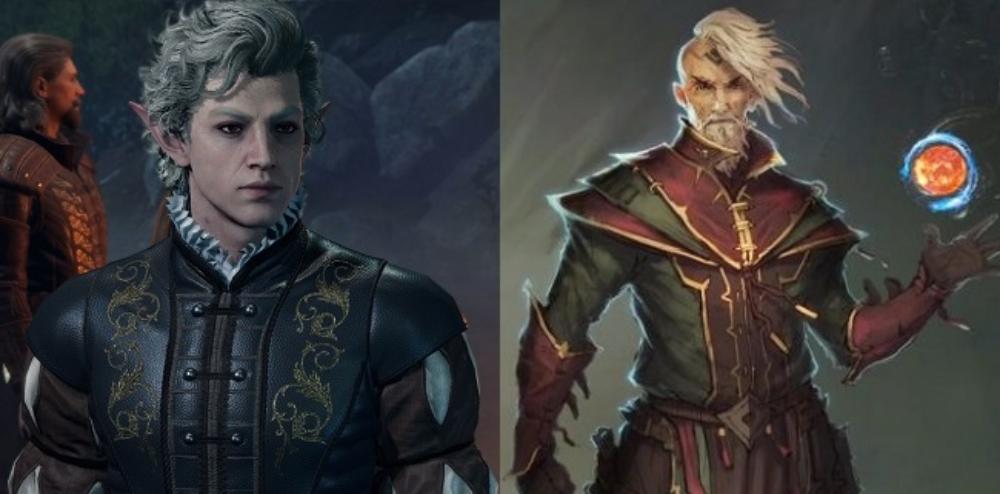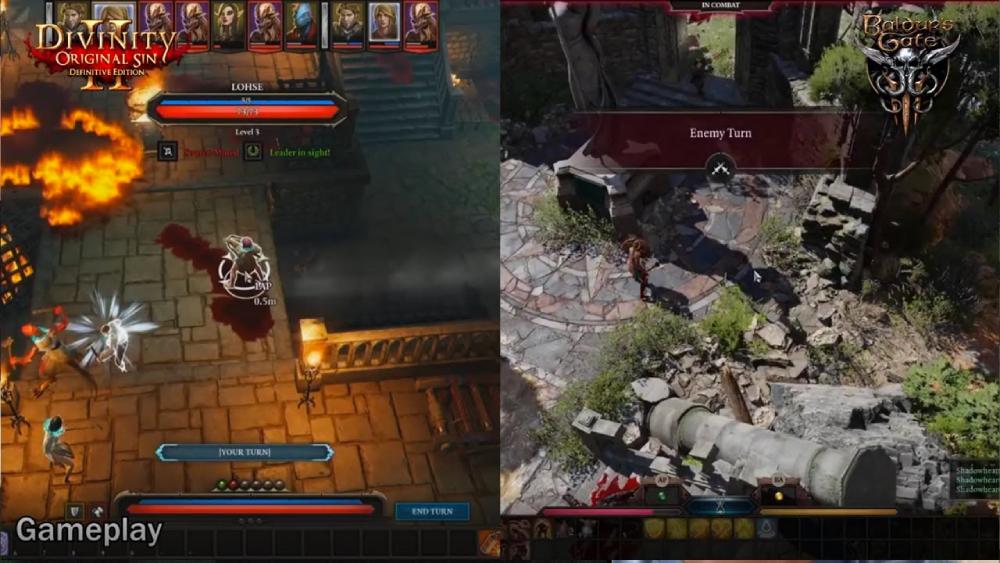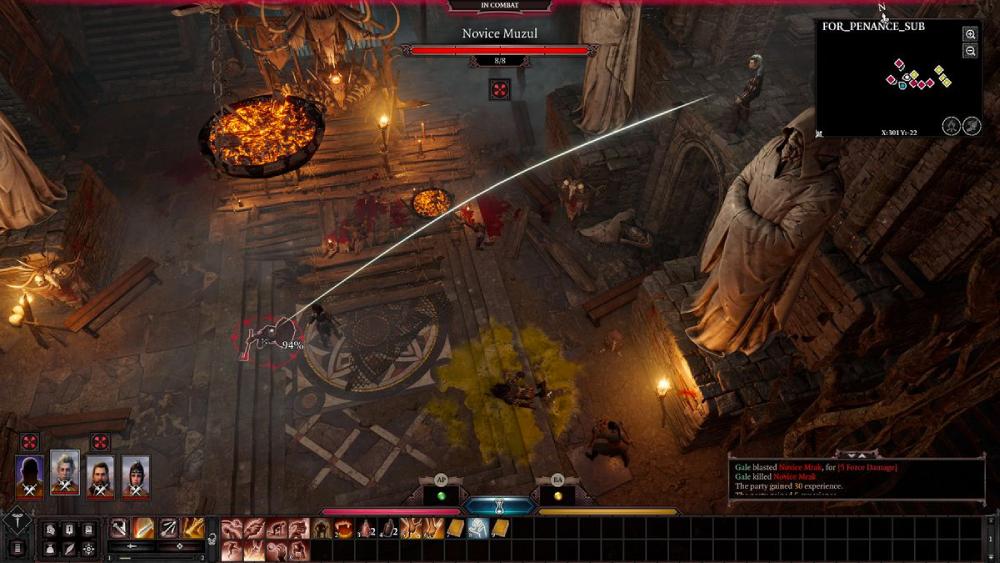Physical Address
304 North Cardinal St.
Dorchester Center, MA 02124
Physical Address
304 North Cardinal St.
Dorchester Center, MA 02124

Hey, gamers! Have you been wondering whether Baldur’s Gate 3 can live up to the hype and be as great as Divinity: Original Sin 2? Well, we’ve got you covered. While these games share some similarities, they are actually quite different in many ways. So, let’s dive into a comparison and see which one comes out on top. Are you ready to find out which game reigns supreme? Let’s go!

Baldur’s Gate 3 and Divinity 2 have some significant differences in their narrative focus. Divinity 2’s story revolves around magic and divine entities, which are essential elements of the game’s core, as suggested by its name. On the other hand, while Baldur’s Gate 3 may involve these elements, they are not necessarily central to the game’s narrative.
Additionally, Baldur’s Gate 3’s setting in the Forgotten Realms of Dungeons & Dragons is a departure from Divinity 2’s world of Rivellon. However, both games share an opening beat, where the player character is held captive aboard a ship, the ship is attacked by a monster and subsequently destroyed, and the player is left to explore and pick up the pieces.
Despite this similarity, Baldur’s Gate 3’s narrative takes a different direction by evoking the wilderness exploration elements popular in some D&D adventures, and the game’s storyline is further propelled by the presence of an illithid tadpole implanted into the player character’s skull.

Baldur’s Gate 3 and Divinity 2 have some significant differences in their gameplay mechanics. While both games are built on the same engine, Baldur’s Gate 3’s mechanics have been updated to match the rules of Dungeons & Dragons 5e. As such, Baldur’s Gate 3’s gameplay revolves around rolling virtual dice to determine the success or failure of actions, whereas Divinity 2 uses a more complex system that involves percent chances, stat thresholds, and other methods.
In Baldur’s Gate 3, difficulty classes are used to determine the outcome of actions, and the player must roll a 20-sided die and add bonuses from their character sheet and situational modifiers to compare against the predetermined number. This system covers every check in the game, from dialogue choices to environmental exploration, creating a consistent and straightforward mechanic for players. In contrast, Divinity 2’s system can be more complex, demanding that the player learn and master numerous mechanics and subsystems to achieve success.
While Baldur’s Gate 3’s gameplay may seem simplified, it still offers tactical depth, particularly in the game’s combat systems. Players can engage in turn-based battles that involve a wide range of tactics, from flanking and positioning to taking advantage of elemental interactions between spells and the environment. Additionally, Baldur’s Gate 3 allows players to approach combat encounters in a variety of ways, from diplomacy and stealth to full-on combat, providing a range of strategic options. Divinity 2’s combat is similarly tactical, with an emphasis on environmental interactions and the use of spells and abilities, but it also involves more complex mechanics such as action points and cooldowns.

The combat systems in Baldur’s Gate 3 and Divinity 2 differ in a few key ways. In Divinity, combat is based on a round-robin style initiative, while BG3 uses D&D 5e rules, with every combatant making a dexterity skill check and ordering turns based on the results. Divinity provides each character with a specialized list of skills for use in combat, while BG3 has a list of common actions and spells that vary from character to character and cost an action or bonus action. BG3’s spells are pulled from D&D, making character creation less daunting for players new to the game. Both games offer excellent role-playing experiences, and BG3’s upcoming full release will provide a massive game for fans of Dungeons & Dragons and Larian Studios alike.
If you’re looking to play either Baldur’s Gate 3 or Divinity 2, it’s important to make sure your computer meets the minimum requirements to run the game. Here are the specs for both games:
| Minimum Requirements | Recommended Requirements |
|---|---|
| OS: Windows 10 64-bit | OS: Windows 10 64-bit |
| Processor: Intel I5 4690 / AMD FX 8350 | Processor: Intel i7 8700K / AMD r5 3600 |
| Memory: 8 GB RAM | Memory: 16 GB RAM |
| Graphics: Nvidia GTX 970 / RX 480 (4GB+ of VRAM) | Graphics: Nvidia 2060 Super / RX 5700 XT (8GB+ of VRAM) |
| DirectX: Version 11 | DirectX: Version 11 |
| Storage: 150 GB available space | Storage: 150 GB available space |
| Minimum Requirements | Recommended Requirements |
|---|---|
| OS: Windows 7 SP1 64-bit or Windows 8.1 64-bit or Windows 10 64-bit | OS: Windows 7 SP1 64-bit or Windows 8.1 64-bit or Windows 10 64-bit |
| Processor: Intel Core i5 or equivalent | Processor: Intel Core i7 or equivalent |
| Memory: 4 GB RAM | Memory: 8 GB RAM |
| Graphics: NVIDIA GeForce GTX 550 or ATI™ Radeon™ HD 6XXX or higher | Graphics: NVIDIA GeForce GTX 770 or AMD R9 280 |
| DirectX: Version 11 | DirectX: Version 11 |
| Storage: 60 GB available space | Storage: 60 GB available space |
As you can see, Baldur’s Gate 3 has a slightly higher minimum and recommended requirements compared to Divinity 2. It requires a more powerful processor and graphics card, as well as more memory and storage space. Both games require a 64-bit operating system and DirectX 11, but Baldur’s Gate 3 needs a whopping 150 GB of available space, compared to Divinity 2’s 60 GB. If you’re planning to play either game, make sure to check your computer’s specs against these requirements to ensure a smooth gameplay experience.
You may also like:

If you’ve played Divinity: Original Sin 2, you’ll find some similarities in Baldur’s Gate 3. For starters, both games have environmental interactions that can affect combat. While Baldur’s Gate 3 tones down the flammable barrels, it still offers ways to set things on fire or create water. Both games also have a party of four characters, and surplus characters can be swapped in and out of the party in Baldur’s Gate 3. Neither game has a day-night cycle, and both have a turn-based combat system. In both games, combat can be exploited if one character is kept out of combat and then used for sneak attacks or positioning. Finally, both games begin with the player character waking up on a beach after being shipwrecked or imprisoned. These similarities show that while Baldur’s Gate 3 is different from its predecessor, it still has some of the features that made Divinity: Original Sin 2 a great game.

Baldur’s Gate 3 and Divinity: Original Sin 2 share some similarities, but they have some important differences too. For one thing, elves are much more traditional in Baldur’s Gate 3 than they were in Divinity 2, lacking the strange physical features and cannibalistic tendencies of their Rivellonian counterparts. Additionally, Baldur’s Gate 3 handles skill checks differently, relying on a D&D-style d20 roll rather than a set difficulty score. Pets are not as central to the story in Baldur’s Gate 3, and environmental effects are not as punishing. Finally, while both games have memorable companions, Baldur’s Gate 3’s companions are more likely to clash and cause conflict. These differences make Baldur’s Gate 3 a distinct and compelling RPG experience.
Fans of Divinity 2’s Dungeon Master mode may be disappointed to learn that Baldur’s Gate 3 will not feature a similar mode. The Dungeon Master mode in Divinity 2 allowed players to create custom campaigns and control the game’s narrative, adding a whole new level of customization and replayability. Despite this absence, Baldur’s Gate 3 is still expected to offer a rich and immersive gameplay experience with a strong narrative and plenty of character customization options.
In conclusion, Baldur’s Gate 3 and Divinity: Original Sin 2 share several similarities, including environmental interactions, a party of four, no day-night cycle, one-on-one conversations, turn-based combat, and a starting point on the beach. However, there are also significant differences, such as the absence of cursed effects, the importance of approval, the lack of blessed and cursed effects, and the absence of pet pals. Despite these differences, both games offer a fantastic RPG experience and a unique take on the classic Dungeons and Dragons formula. Ultimately, it’s up to personal preference which game you choose to play, but one thing is for sure: both games are well worth your time.